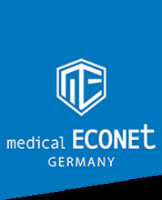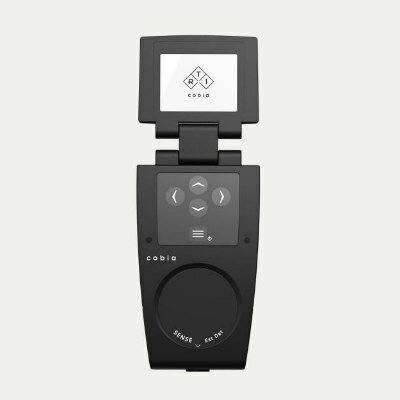MR-Based, Wearable Technology Allows for Patient Movement to Provide More Precise Data Reconstruction
By MedImaging International staff writers
Posted on 03 Jul 2013
One of the biggest problems of hybrid positron emission tomography/magnetic resonance (PET/MR) imaging is the pervasiveness of motion artifacts—distorting and misty visual anomalies caused by patient motion on the table during imaging. Posted on 03 Jul 2013
An MR technology has now been designed for PET/MR that employs tiny radiofrequency solenoids to track motion from those who do not or cannot stay in position. Special software can then use the additional data provided by the coils to optimize the image, according to research presented at Society of Nuclear Medicine and Molecular Imaging’s (SNMMI) 2013 annual meeting, held June 8–12, 2013, in Vancouver (BC, Canada).
One of the most significant tools of this technology is in brain imaging for patients with dementia, who frequently have movement disorders such as those in Parkinson’s disease. For these patient groups, this technology improves already exceptional diagnostic imaging and creates better potential for therapy monitoring in the future. “Dementia is one of the biggest health problems facing human society now and in the future. PET is a powerful tool in early detection and treatment of dementia, including Alzheimer’s disease. Early diagnosis of dementia can have a tremendous impact on treatment for patients and their family members,” said Chuan Huang, PhD, lead researcher for the study, from Massachusetts General Hospital (Boston, MA, USA). “Simultaneous PET/MR allows measurement of anatomy, functionality, and biochemistry of tissues and cells. Combined with our low-cost MR microcoil-based motion correction, PET/MR provides essential information about the brain and other parts of the body with greater accuracy, even for long studies or research involving motion, which opens the door to more expansive multimodality studies.”
Specifically, during brain scans, patient head motion without corrective technology can lead to imaging failures caused by widespread blurring in reconstructed PET data. Even patients who are restrained are liable to move position during scans that can take one or more hours, and only a few millimeters or degrees off can cause artifacts.
“PET imaging is similar to taking a photo inside the body using specialized imaging data,” said Dr. Huang. “Just like with a normal camera, when you take a picture in an extremely lowlight environment you need long exposure times to get a good quality picture. If the object is moving, the image blurs. Our research is essentially providing an image stabilizer for PET/MR scanners, which can then generate crisp and clear images even though the object is moving. Our approach is similar to capturing each of the light rays coming from the moving object and configuring it back to its original position.”
The microcoils are only several millimeters in diameter. Before scanning they are fixed on an apparatus placed on the patient’s body, providing real-time and three-dimensional (3D) fields of motion during imaging that are incorporated during image reconstruction. Other motion tracking techniques now in clinical use include gating technologies that involve the equivalent of freezing a motion picture and arranging film stills in a pattern that omits motion, then splicing them back together; but this means effectively throwing away important information between data splices, which degrades scan quality.
Researchers conducted the study by using phantoms and motion was simulated using a ventilator system. The MR microcoil apparatus was positioned on the phantom, and motion tracking was acquired simultaneously during PET/MR scanning. Results of the study showed that 3D motion-tracked PET imaging using MR microcoils dramatically reduced movement-related imaging artifacts. Now that this PET/MR technology has been proven beneficial, further research will be needed with actual patients before it can be expanded into general imaging practice.
Furthermore, the researchers are developing wireless microcoils for use with PET/MR. “The wireless microcoils are, compared to the wired coils, more patient friendly, easier to set up and cheaper to manufacture,” added Jinsong Ouyang, PhD, senior researcher for the study, also from Massachusetts General Hospital. “The advantages should smooth adoption of motion-tracking microcoils in clinical practice.”
Related Links:
Massachusetts General Hospital














